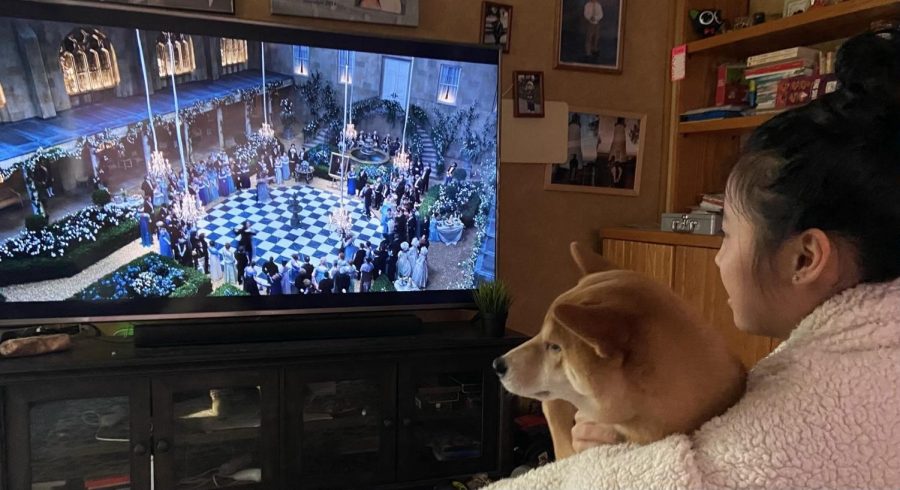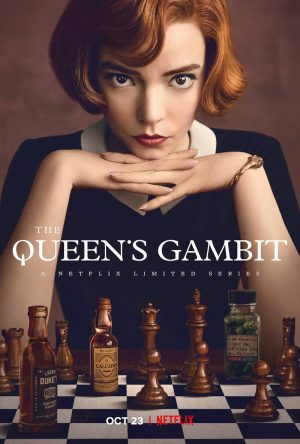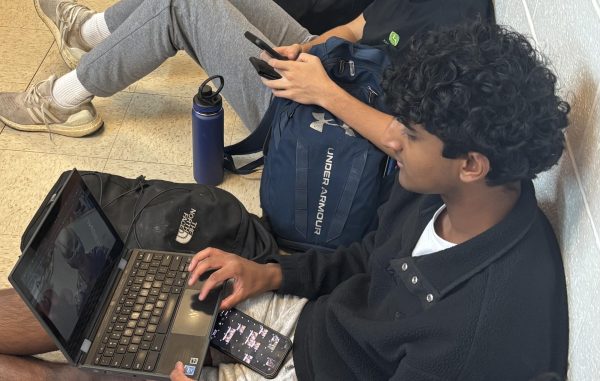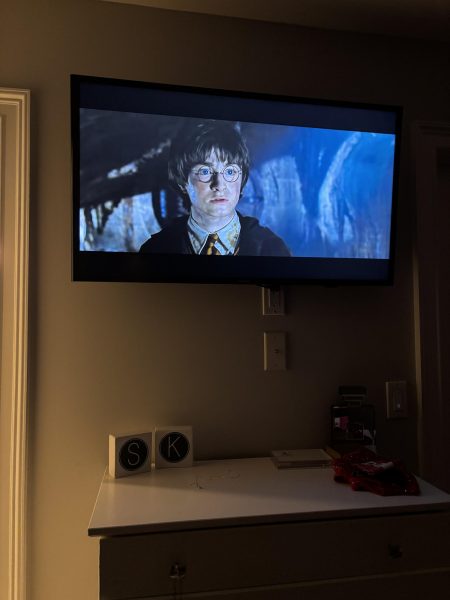Bridgerton is exuberant, shallow period drama
Sophomore Emma Song watches the last episode of the Netflix Original series, Bridgerton, at home on Jan. 12.
Based on the book series by Julia Quinn, Bridgerton follows the Bridgerton family as they experience romantic relationships and marriage proposals during “courting season.”
The first season of the London period drama focuses on the eldest, most prominent daughter, Daphne Bridgerton. During this time, London is brought to life, bustling with lavish parties and dreamy balls as the newly-of-age debutantes look for a marriage that will elevate them on the social ladder and also gain the approval of the queen. The queen is gossip and drama driven, obsessing over the love lives and scandals of the up-and-coming socialites through the gossip newsletter.
The ever-present narrator and Gossip Girl of the 19th century is known as Lady Whistledown. The elusive, pseudonymous writer manages to reveal all the scandals and dirty secrets of the socialite families in her newsletter. The main characters, Daphne and Simon, are attempting to get themselves on the front page of Lady Whistledown’s newsletter, and in doing so, find themselves in one of the most irresistible, reused plot lines of romance stories: the fake dating trope.
Bridgerton, although a London period drama, still has a diverse cast. It was interesting to see the racial integration of the socialites. There is a poor attempt by the writers to explain how this happened: When King George fell in love with a Black woman, racism abruptly ceased to exist and minorities were granted higher ranks and titles. This was a feeble attempt to explain something that didn’t need an explanation, and raises more questions than answers. How many generations have lived in this changed society? How many Black families in the show have titles and generational wealth? And most pressing of all, how did just one interracial relationship solve racism? Hopefully, in the following seasons, the show is able to explain the confusing reasoning for its reality.
In one scene, a close friend of Simon’s mother, Lady Danbury, talks about how the king and queen’s love cured racial tensions. In this scene, the show fails to acknowledge the racial differences and only pushes for their fantastical dream of historical racial harmony. The show also fails to diverge into other perspectives and conflicts that this diverse cast could have brought to the table. The writers took an almost colorblind approach, where each character’s race barely impacts their story and presents race as an unimportant part of their character. Bridgerton managed to be conscious, but also escapist.
The most controversial part of this show is the sexual assault scene, where Daphne manipulates Simon into impregnating her without his consent. In the book, Julia Quinn distinctively writes that it was non-consensual in every way, as Simon is barely conscious and couldn’t give consent. In the show, he is conscious but voices his dissent, so Daphne’s actions are assault in both versions. Most infuriating is that the show chose to focus on how Daphne felt about not being able to get pregnant instead of the Duke’s emotions from the assault. The assault is brushed over, almost unimportant. It is irresponsible to have this scene as a major plot point if it would be dismissed afterward in favor of other storylines.
Excluding the uncomfortable parts of this series, it is an easy-to-follow background drama. The extravagant costumes and sets, contemporary cover music, and surreal scenery of the London grounds are enjoyable. Hopefully, the makers of the show delve more into the other characters and their stories in the next season, as the first season wraps up without leaving any loose ends.
Your donation will support the student journalists of Thomas S. Wootton High School. Your contribution will allow us to purchase equipment and cover our annual website hosting costs.
Emma is a 2023 graduate.











